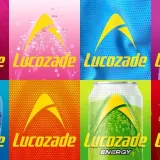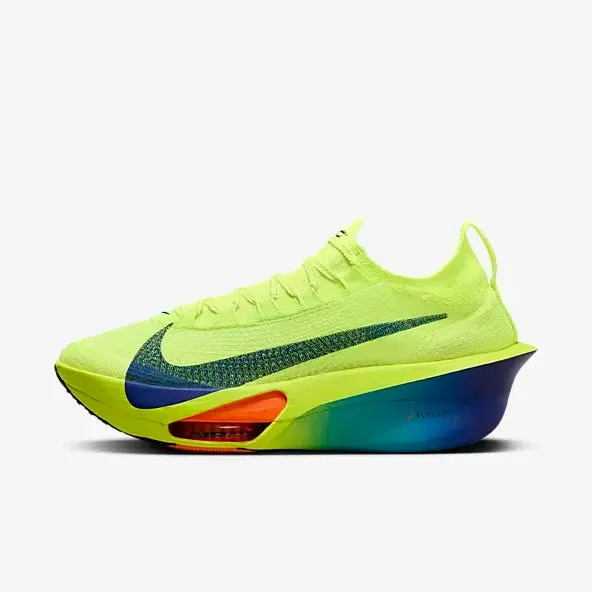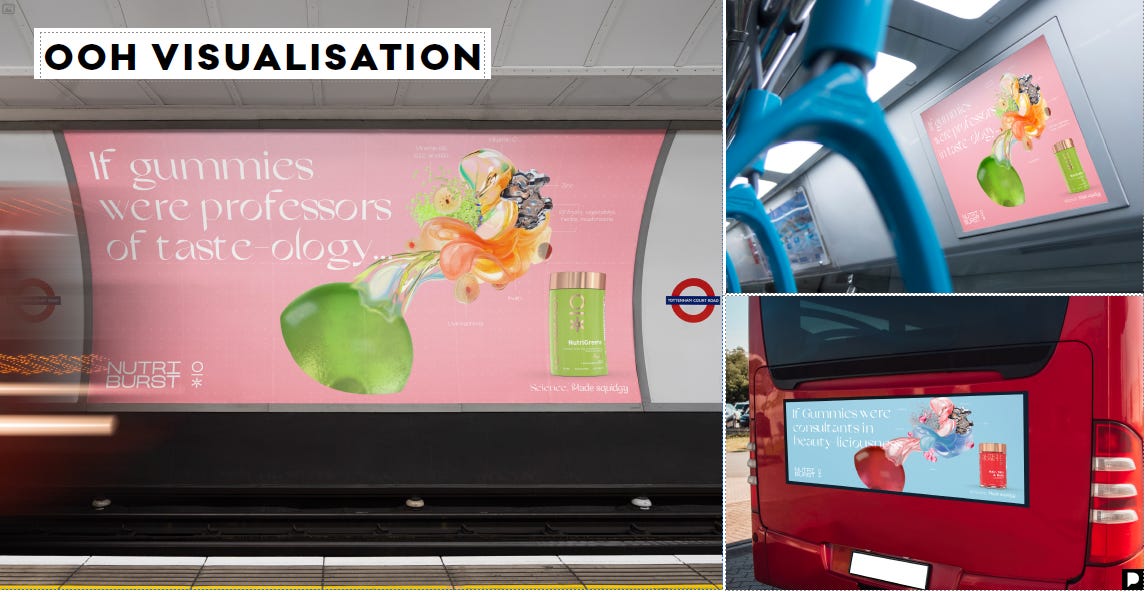


YOU DON'T BUY BRANDS FOR YOURSELF - YOU BUY BRANDS FOR YOUR FRIENDS
Sometimes, it's not good enough for your brand to be the best solution. It has to the brand your buyers know their friends know of.

I was so motivated by the lure of digital – now perhaps referred to more as ‘performance marketing’ – that I started the Pull Agency in 2008 as Pull Digital.
However, building a new business around digital, but having a background in brand, I often say that while I actually loved working on the number-crunching and optimising client digital campaigns, doing so taught me one thing about marketing that I already knew – in the end – brand trumps all.
So I’ve watched the rise and fall(?) of digital marketing with a lot of interest. I believe it was once the case that you could create and start businesses entirely online. I did this with two ecommerce sites in the US starting in 2006. It was done with brand franchises and winning the top organic search result spots ahead of the brand owners. But I sold out 10 years later, largely because the stores were too dependent on performance marketing, and ROI started going south after about 2012. The brands owned the brands. We were mere (small) retailers. Brand trumps all.
As an agency we wince when we are approached by brands that say for example: “We have our own D2C site, and are available on Amazon.” In most cases what they are saying is “We don’t have a brand.” The first thing we ask nowadays is whether they have some meaningful physical retail distribution. It’s the one single best indicator for us as to whether we should work with them. It’s 1994 all over again.
It has also been stated: “There is no good example of a sizeable brand that has been built entirely online.” I always think this must be wrong. But then struggle to find an example. Although surely Google must be an answer. Google did start mailing small vendors in around 2010. So about 12 years after they were founded and had obviously achieved huge status. Indeed, in The Google Guys, Larry page and Sergey Brin boasted that they never advertised and never needed to (passing over the hypothesis that they might have grown even faster with advertising).
So I guess the answer to the online only question is moot. However, there is an even more interesting and practical question that has been raised quite a bit recently. This is about whether it matters WHERE your brand is seen. I was recently lauding Elon Musk for his principled stance on censorship on X (All the other tech platforms including what was Twitter have complied with US, EU and other government’s demands to throttle or remove posts and people who break with ‘the narrative’ on Covid, Climate Change etc. in a shocking display of suppression of free speech). But in doing so I was forced to consider whether ‘shouty’ public chatter sites are a good place for your brand ads to be seen. Despite a fondness for Musk’s stand, I have my doubts.
So are there other arguments about where your brand is seen that go beyond: Don’t get seen alongside shouty bigoted people? Slight spoiler alert here. I think the answer is ‘yes’. I would advise any mid-sized brand to be seen or heard in the physical world as well as the digital, and secondly, that they may not only need to target their buyer personas but their friends too.
How brand building - and brand demolition - works
Firstly let’s start as I like to with our Byron Sharp. Advertising rarely succeeds through arguments or calls to action. Instead it creates positive memories and feelings that influence our behaviour over time to encourage us to buy something at a later date. Think about cars. You may only buy one Audi (random example) in your life. You will spend most of your life not actively considering buying one. You don’t have to ‘love’ Audi, but when the circumstances are right, you will only buy one if you have a positive attitude to the brand in general.
The other thing that may well influence your purchase is what your friends, family and network think of the brand (if they think anything at all of course). This probably worked in a negative way recently for Bud Light.

The brand was quite largely boycotted after it aired a social media post from effeminate TikTok star Dylan Mulvaney who was sent a personalised case of Bud Light. This was a bit much for the good ‘ol boys who like to be seen with a can of Bud Light in their hands. So suddenly a whole host of them DIDN’T want to be seen with a can of Bud Light. (The most confusing aspect of this for some of us is – why would anyone want to DRINK Bud Light? – but let’s move on.)

Musician Kid Rock didn’t want to be seen with Bud Light so of course he shot it
That Bud Light story is illustrative of a human need to be part of what is culturally acceptable. Although it was never a strategic campaign, the big marketing mistake in that case was the progressive brand manager Alissa Heinerscheid’s desire to ‘correct’ the brand’s American blue collar customer’s attitude to transgenderism. This need to do something about brand user’s perceived wrongthink overcame the brand’s need to be seen as culturally acceptable to its buyers - with catastrophic results for the brand.
There are product categories in which brand consumption is quite public – cars, phones, streaming music and TV, soft drinks, pub drinks, beer, clothes. Depending on the brand users – whose attitude will vary – being seen with the right brand can be quite important. But the point here is that you can only be sure that you are being seen with the right brand if you can be sure that not only you, but your social group knows the brand.
This is where visible advertising comes in. Digital advertising was lauded for its ability to deliver one-to-one messages. But imagine this: Could Nike’s brand have been built entirely online? However good the targeting, if my buddies haven’t seen the brand in mass media it doesn’t exist.
There are a few watch connoisseurs who will buy a still quite expensive niche, analogue Swiss watch brand pleased that it is “as good as a Rolex, but more affordable”. But for many affluent people, there is no point in buying a luxury watch if it isn’t an easily recognisable brand. Unlike the niche watch maker, Rolex is a massive advertiser – and not on digital. They sponsor elite sports like F1, polo, and elite institutions like opera houses and orchestras. That advertising doesn’t exist to persuade new buyers to buy Rolex. It exists to make owners feel good about their purchase and confirm their status. The expensive sponsorship is paid for by the brand premium. Rolex buyers are buying their association with a set of elite events and institutions.
And a big advertising spend is in itself a major signal to buyers and their friends. Hence the Superbowl factor that shows no sign of going away anytime soon. “We’re willing to put a lot of money on this product. We’re committed to it. We’re putting money where are mouths are.” You can’t do that online. After all – what ads do you think your friends see online? (This reminds me of British politician and former deputy prime minister John Prescott. He once complained bitterly about being targeted with ads for ‘Thai brides’. “Why on earth would I see ads for Thai brides?” Why indeed John?
So having your brand seen in public rather than private has an incalculable benefit over only being seen in private. For brands people are seen with, it might matter a lot for buyers to know that their friends, family, colleagues or network have seen that brand promoted.
Recently the Pull Agency created a campaign for a new high quality supplement gummy. The brand had already been promoted online, but we jumped at the chance for a pre-Christmas outdoor push of the brand around London. There were two reasons why we were so keen to do an outdoors campaign.
- We had created a very striking visual concept for the brand (with the aid of AI, but that’s another story). There are a lot of ads for supplements on the London underground. They are almost universally dull. With indistinct generic messages and a lot of small print. We saw a chance to stand out with a disruptive approach. We knew the brand would look very distinct and the ads would punch above their media weight.
- Gummy supplements are very on-trend. Nutriburst already had very distinctive packaging. We knew our target user persona was someone who cared about their wellbeing, but also wanted to not just do the right thing for their health, but to be seen to be doing the right thing. No better way to do that than have a pack of that crazy new gummy everyone is seeing about town on your kitchen counter.
Nutriburst is the kind of challenger brand Pull works with. They are a ‘smaller’ brand. If you are a smaller brand that currently only does online advertising, think about other channels. Especially if your brand is distinct and you have good creative.
All impressions aren’t equal. Where your brand is seen matters. And how many of your target’s friends see it can matter too. Try to make sure your brand gets seen in the real world – not just the virtual one.
Posted 15 April 2024 by Chris Bullick

